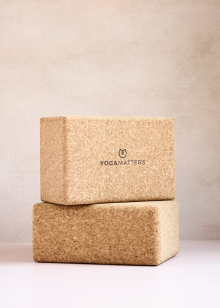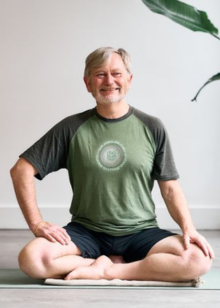It may not have the prettiest name, but the humble Cow Face Pose holds a wealth of symbolism and some important knowledge to teach us about the Indian tradition.
If you visit India and parts of Nepal, you’re likely to see cows roaming the streets, and wandering amongst the traffic without a care in the world. People don’t bother the cows, they don’t attempt to move them back towards the fields, and they certainly don’t eat them…. In India, cows are considered sacred within the traditional Hindu religion, and although they aren’t worshipped, they are deeply respected and decorated during various festivals.
For thousands of years, humans have relied upon cows for their nourishing milk, and once able to heat and change the milk, they could also enjoy curd, yoghurt, butter and ghee (clarified butter). It is the ghee which is considered particularly sacred in the Hindu tradition, and had been – and still is – used for special religious ceremonies and as a medicine. The ancient health system of Ayurveda has used ghee since the beginning of recoded history, for cooking in dishes and also as a rejuvenative medicine. It is said that ghee carries nutrients deeper into the body’s tissues, and is incredibly healing for the digestive tract, and lubricating for connective tissues. Today, cow dung and urine is even used in modern day products, such as cosmetics and paper.
Roughly 75% of those living in rural parts of India keep their own cows to milk, but as a whole, the country is one of the biggest producers of milk in the world. Of course, the fact that cows are considered scared doesn’t mean the modern Indian dairy industry is any better than in the West, although there are many states that actually ban the slaughter of cows, and the consumption of their meat is widely prohibited.
Sacred Cow
Historian Mukul Kesavan writes that; “For Hindus, the desi cow is a beautiful thing. Its large eyes, its calm, its matte skin tinted in a muted palette that runs from off-white to grey through beige and brown, its painterly silhouette with its signature hump, make it the most evolved of animals”, and when visiting England, he says the English cows looked so different to those in India, that he didn’t even register that they were cows at first.
Giver of food, life and nourishment, the cow is often seen as the perfect mother figure, with some stories even saying that her four teats allow for her milk to be shared by many. Even Gandhi was an adamant protector of cows, saying; “I worship it and I shall defend its worship against the whole world,” he regarded the sacred cow as ‘the mother to millions of Indian mankind.
Krishna The Cow Protector
The important Hindu god Krishna goes by many names, including Govinda and Gopala. The word Go translates as ‘cow’, with the names meaning ‘cow bringer’, ‘cow herder’ and ‘cow protector’.
In many famous Indian stories, Krishna is said to have had a love for butter as a baby, so much so that he’s often known as the ‘butter thief’. During his infant years, he was particularly mischevious; playing tricks, stealing butter and handing it out to his friends and even to the monkeys, before devouring some for himself. In some stories it is said that Krishna didn’t steal the butter merely for himself, but as a way of feeding his friends who were poor and could afford little food. Other tales say that the Gopis were so fond of Krishna, that they would leave pails of milk and pots of butter out for Krishna, as a sign of their love and devotion to him. (A Gopi is the name given to a female cowherd).
Gomukhasana
We already know the word Go translates as ‘cow’, and by adding the word mukha, we create the word ‘cow face’. The word asana – in this context – means ‘posture’. But what does the mythology, the culture of India, and the sacredness of the cow have to do with a Yoga posture? Well, the Yogis who first invented these asanas took inspiration from the world around them. As cows are extremely common in India, were considered sacred and kept by families even in ancient times, they practiced the posture as a way to revere the cow, and emulate the lips and large ears of the animal – with the legs of the practitioner representing the cow’s mouth and the arms symbolising the ears.
As the posture is seated, and brings space into the sides of the ribs and lungs, it’s likely this asana would be traditionally practiced before sitting for pranayama (breathing exercises) and meditation. The ancient Yogic text the Hatha Yoga Pradipika describes it so; ‘Place the right ankle next to the left buttock and the left ankle next to the right buttock. This is Gomukhasana, and it resembles the face of a cow’. Because of the bound legs and clasped hands, it’s said that the posture creates a ‘complete energy circuit flowing in the spinal region’, as prana cannot escape outward through the lower parts of the body nor the hands. Some texts omit the arm position, saying instead that the practitioner may rest the hands on the top knee, and practice Shambhavi mudra (gazing at the eyebrow centre), as a point of concentration.
The calm, still nature of the posture is a nod towards the nature of the cow, and allows us to perhaps embody the unhurried, quiet and tranquil essence of the much loved and sacred animal.














